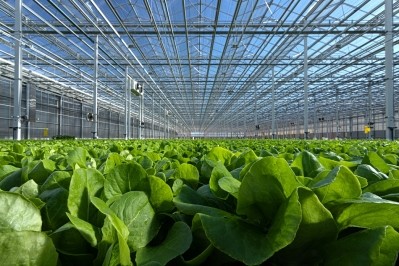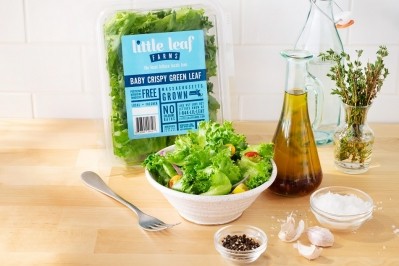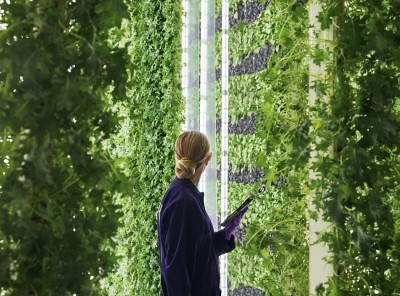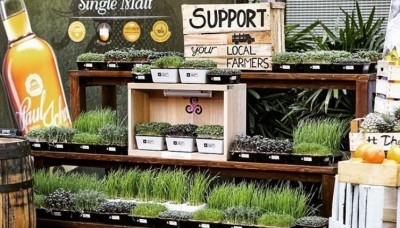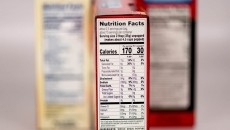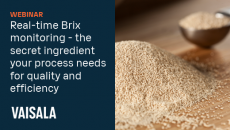Investing in the Future of Food: Patent protection is an essential first step ahead of fundraising
Scott Massey, who co-founded Heliponix with Ivan Ball while they were both undergraduate students at Perdue University as a way for consumers to safely and efficiently grow aeroponic produce in their homes, explains that securing patent protection is an essential first step because every time entrepreneurs share their idea they risk exposure to copycats. Similarly, he says, patents can speed fundraising and growth by reassuring investors and other potential business partners.
In this episode of FoodNavigator-USA’s Investing in the Future of Food, which was filmed before the pandemic, Massey explains why patents are worth the high price tag, how to pay for them without going into debt or losing equity and shares advice for navigating the multi-year process of securing them.
Patents are a ‘necessary jump to make to get additional funding’
While many entrepreneurs are excited to share news about the companies, Massey recommends that before they do they ensure they are sufficiently protected.
“Every time you talk about your idea, this is a disclosure publicly. So, you need to get these provisional patents in place at the very beginning before you start presenting your idea,” he said, explaining that provisional patents are similar to learners’ driving permits in that they provide sufficient protection for a limited amount of time so that entrepreneurs can raise initial funds and awareness without fear of exposure.
While the first round of patent protections can cost upwards of $5,000, Massey says, “it is a necessary jump to make to get additional funding,” and “to show that a product can’t be immediately knocked off by someone.”
In Heliponix’ case, Massey said that the company needed to protect its unique concept of rotary aeroponics, which he says is more energy efficient, higher yielding and more food safe than other available options.
“Knowing that the business model needed to be defensible, patenting that was our biggest priority,” he said.
The roots of GroPod
Massey explained that his and Ball’s idea for the GroPod smart garden appliance with its unique rotary aeroponics model and Seed Pod subscription came from their work together on a NASA funded research study to find a more energy-efficient way to grow plants with LEDs and a controlled hydroponic chamber on the international space station.
“I fell in love with the technology of hydroponics – of being able to grow plants without any dirt, and to me it seemed like a natural evolution of agriculture that we would eliminate our dependency on climate and start growing,” he said.
But, he added, “to me the massive vertical farms that you see in the world are so capital intensive, the ROI period to me is really prohibitive. I didn’t see that being the best use of the technology and that is when this idea of a consumer model, this kind of Keurig for food, and the home growing appliance model kind of sprung into my head.”
Paying for patents without debt or losing equity
As a 21-year-old with only about $2,000 in his personal bank account when Massey first launched Heliponix, he acknowledges that financing and navigating the patent process isn’t easy, but can be done through a combination of bootstrapping, competing for funds and working with mentors.
Massey explained that the initial patent funds for Heliponix came from “pretty brutal” nights delivering newspapers, and entering business plan competitions, which “are probably the best possible thing you can have.”
When entering competitions, he advises entrepreneurs to look for prizes that are non-dilutive so that the only catch is having to pay income taxes on the money.
Beyond money, Massey recommends entrepreneurs find a “a good mentor who has done this already, because it is very expensive and it is starts moderately expensive and gets extremely expensive very quickly.”
While the costs can be daunting, he explained that the patent system is designed to give entrepreneurs time to raise funds for each subsequent round of patent protection.
He explained that the first step is securing the aforementioned provisional patent that will last 12 months, after which companies can either nationalize their patents in their country or file with the Patent Cooperation Treaty, which is “essentially and international provisional patent which could cost $5,000 to $10,000 but gives you another 18 months in all these separate countries that you want to file in.”
After that, nationalizing patents in each country can cost up to $10,000 or more considering any potential revisions to the patent, he said. And while some might consider revisions a roadblock, Massey says he doesn’t.
“A good patent is rejected initially. It means you are being vague. You are claiming as much as you can, but you are not being so specific that you are positioning yourself to where your product can be knocked off without actually violating your patent,” he said.
While this process – and sum – may sound intimidating, Massey said, “if you have a good mentor and you properly budget your fundraising for this, this can be a very manageable process. I, by no means, was a stellar student, but I was able to figure it out and I am confident anyone who is motivated and has a good mentor can do what we did.”
Ready for growth
With sufficient funds and guidance, Massey explained last summer that GroPod was ready to grow more plants, more variety and a bigger consumer base.
He explained that GroPod really faced three major bottlenecks, all of which the company has now cleared.
“One is a really good software architecture w good customer support to handle the load, we have now hired a full time PhD software developer so that has now been taken care of. The next bottleneck was production of the physical hardware – we now have a dedicate appliance manufacturer domestically that will be producing this … and our seed pod production is now going to be automated as well and drop shipped directly to the user through our ecommerce software,” he said.
“So for us,” the future is all about growth – “growing more plants, growing more variety and a bigger user base.”
